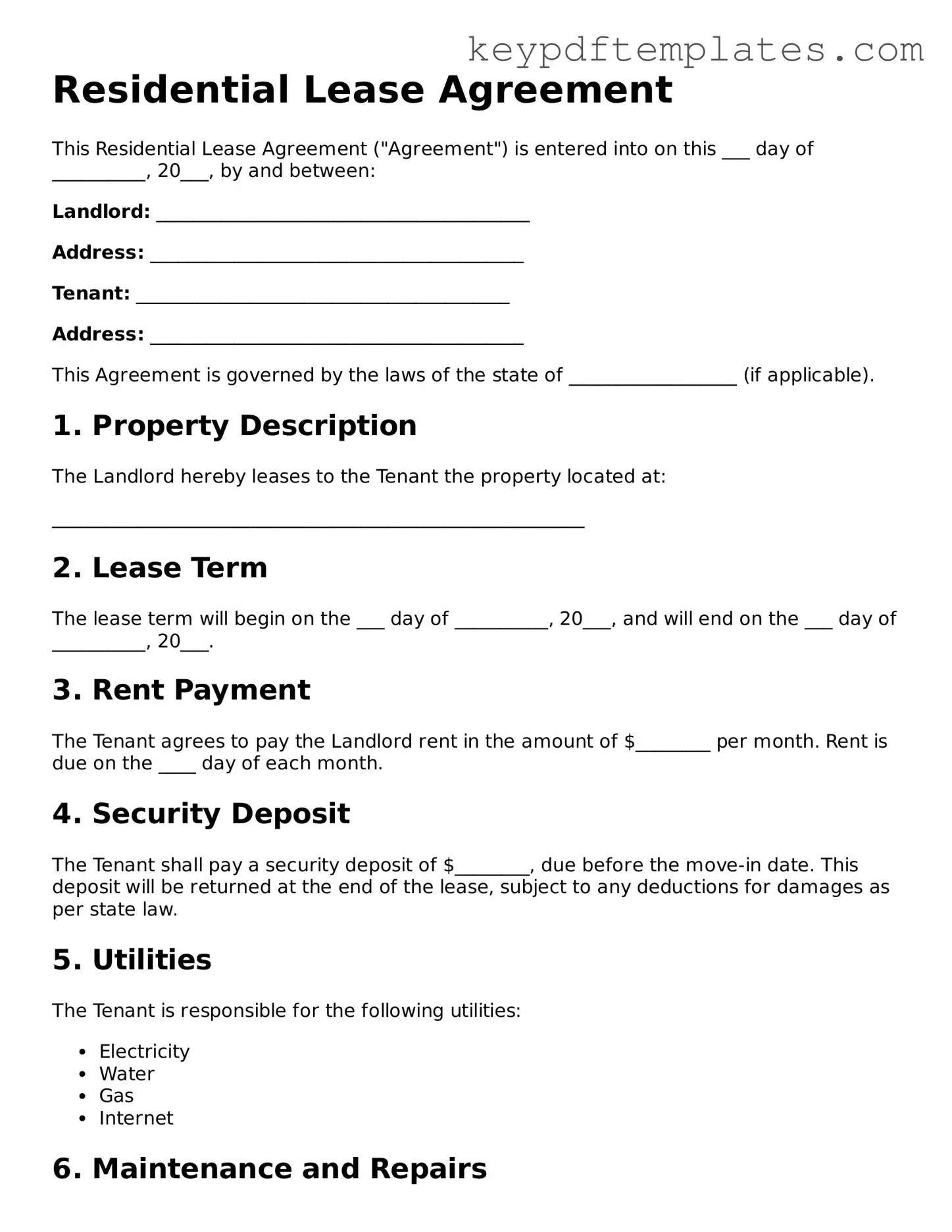Printable Lease Agreement Template
A Lease Agreement is a legally binding contract between a landlord and a tenant that outlines the terms and conditions under which a property is rented. This document serves to protect the rights of both parties and establishes the responsibilities each party must uphold during the lease term. Understanding the key components of a Lease Agreement is essential for ensuring a smooth rental experience.
Modify Document Online
